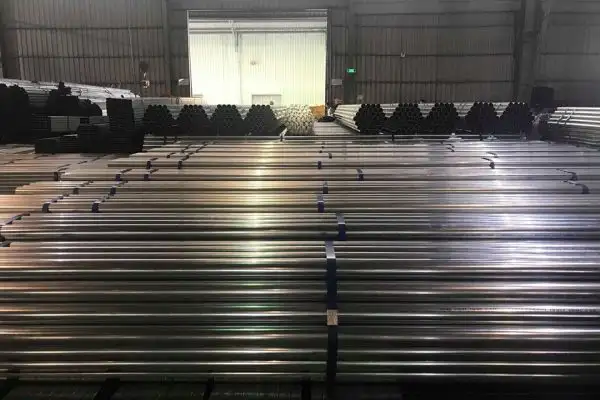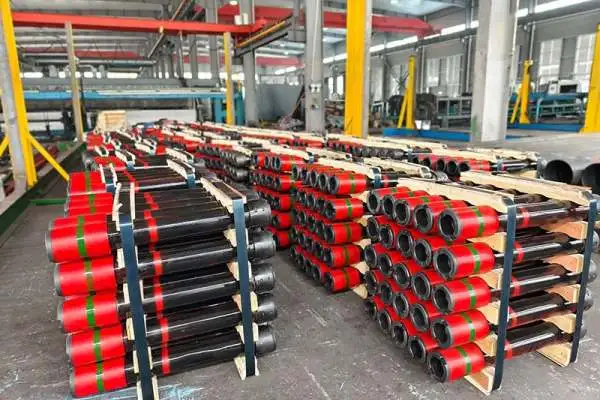API 5L is a specification developed by the American Petroleum Institute (API) for the manufacturing of line pipes used for the transportation of oil and natural gas. It sets the standards for the pipe's material, design, manufacturing process, and testing. The X60 designation refers to a specific grade of steel with certain mechanical properties, commonly used for transporting oil and gas in pipeline applications.
1. Material Grade: X60
X60 denotes the minimum yield strength of the pipe material, which is 60,000 psi (415 MPa). This grade is widely used in the oil and gas industry for pipelines that require high strength and good resistance to external pressures.
2. Chemical Composition:
The typical chemical composition for API 5L X60 pipe includes:
Carbon (C): 0.28% max
Manganese (Mn): 1.30% to 1.60%
Phosphorus (P): 0.030% max
Sulfur (S): 0.030% max
Silicon (Si): 0.10% to 0.30%
Chromium (Cr): 0.20% max
Nickel (Ni): 0.20% max
Molybdenum (Mo): 0.15% max
Vanadium (V): 0.10% max (in some variations)
The exact composition may vary depending on the manufacturer and additional alloying elements.
3. Mechanical Properties:
Yield Strength: 415 MPa (60,000 psi) minimum
Tensile Strength: 520 MPa to 690 MPa (75,000 psi to 100,000 psi)
Elongation: 21% minimum in 8 inches (200 mm)
Charpy V-notch Toughness: X60 pipe is often required to meet minimum toughness requirements for low temperature conditions, especially for pipelines operating in cold climates.
4. Dimensions:
API 5L X60 pipes are available in a range of diameters, wall thicknesses, and lengths:
Outside Diameter (OD): Typically ranges from 1.66 inches (42.2 mm) to 80 inches (2,030 mm).
Wall Thickness (WT): The thickness can range from 0.203 inches (5.16 mm) to 1.00 inches (25.4 mm) or more, depending on the pipe size and pressure requirements.
5. Pipe Grades and Coatings:
API 5L X60 pipes can be produced in different grades, such as PSL1 (Product Specification Level 1) and PSL2 (Product Specification Level 2), depending on the project specifications and required mechanical properties.
PSL1: Basic specification for the pipe that provides basic mechanical properties.
PSL2: A more stringent specification that includes additional testing requirements like Charpy impact tests and higher yield strength.
Coatings: The external surface of the pipe can be coated with various anti-corrosion coatings like:
FBE (Fusion Bond Epoxy): A common external coating to prevent corrosion.
3LPE (Three Layer Polyethylene): Used for additional protection against corrosion in harsh environments.
Bitumen Coating: Used for basic corrosion resistance.
6. Testing Requirements:
API 5L X60 pipes must undergo several tests to ensure they meet the mechanical and chemical properties. Common tests include:
Tensile Test: To measure the yield and tensile strength.
Impact Test: To determine the toughness of the material, especially for cold climates.
Hydrostatic Test: To check the pressure-resistance capacity of the pipe.
Ultrasonic Test: Used to detect internal defects in the pipe.
Visual Inspection: To ensure the external surface of the pipe is free from defects like cracks, pitting, or scratches.
Dimensional Test: Ensures that the pipe meets the specified size and thickness.
7. Applications:
API 5L X60 pipes are commonly used in:
Oil and gas pipelines: Transporting crude oil, natural gas, and other fluids.
Water and slurry pipelines: For carrying water or slurry in industrial applications.
Offshore pipelines: Due to their corrosion resistance and high strength, they are suitable for offshore projects.
Gas and water distribution: In regions with severe environmental conditions.
8. Standards and Compliance:
API 5L X60 pipes must conform to the following:
API 5L: The primary specification for the manufacturing of line pipes for oil and gas.
ISO 3183: International standard for the specifications of line pipes.
ASME B31.4 and B31.8: Codes for design and installation of pipeline systems.
9. Manufacturing Process:
Hot Rolled or Cold Rolled: API 5L X60 pipes can be produced using both hot rolling and cold rolling methods, depending on the pipe dimensions and customer requirements.
Welded or Seamless: While seamless pipes are often preferred for high-pressure applications, welded pipes are also common for line pipes.
API 5L X60 pipes are integral to ensuring the strength and durability of pipeline systems. By adhering to these specifications, manufacturers can provide high-quality, reliable steel pipes that can withstand the pressures and demands of the oil and gas industry.



 English
English Español
Español Français
Français بالعربية
بالعربية




















